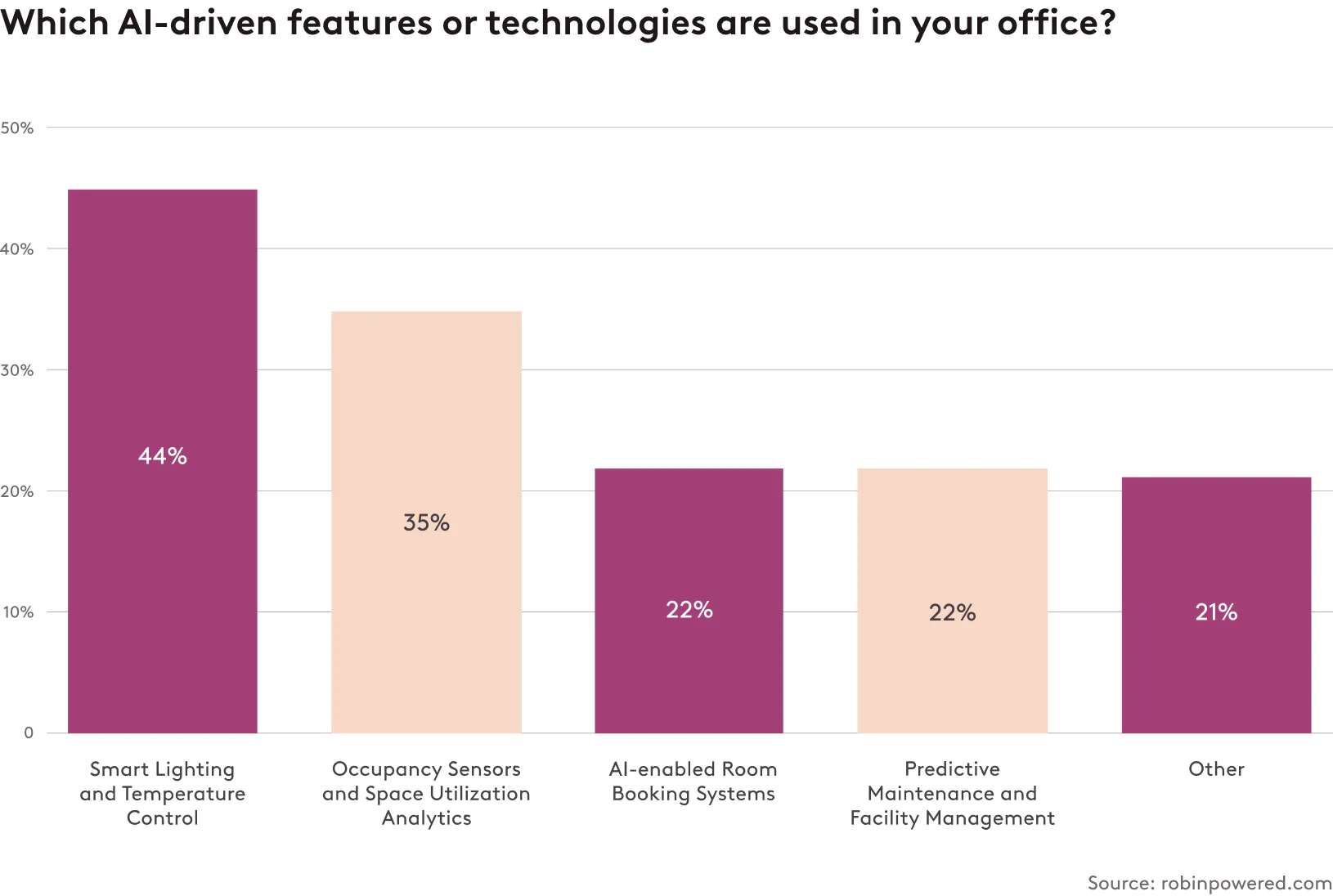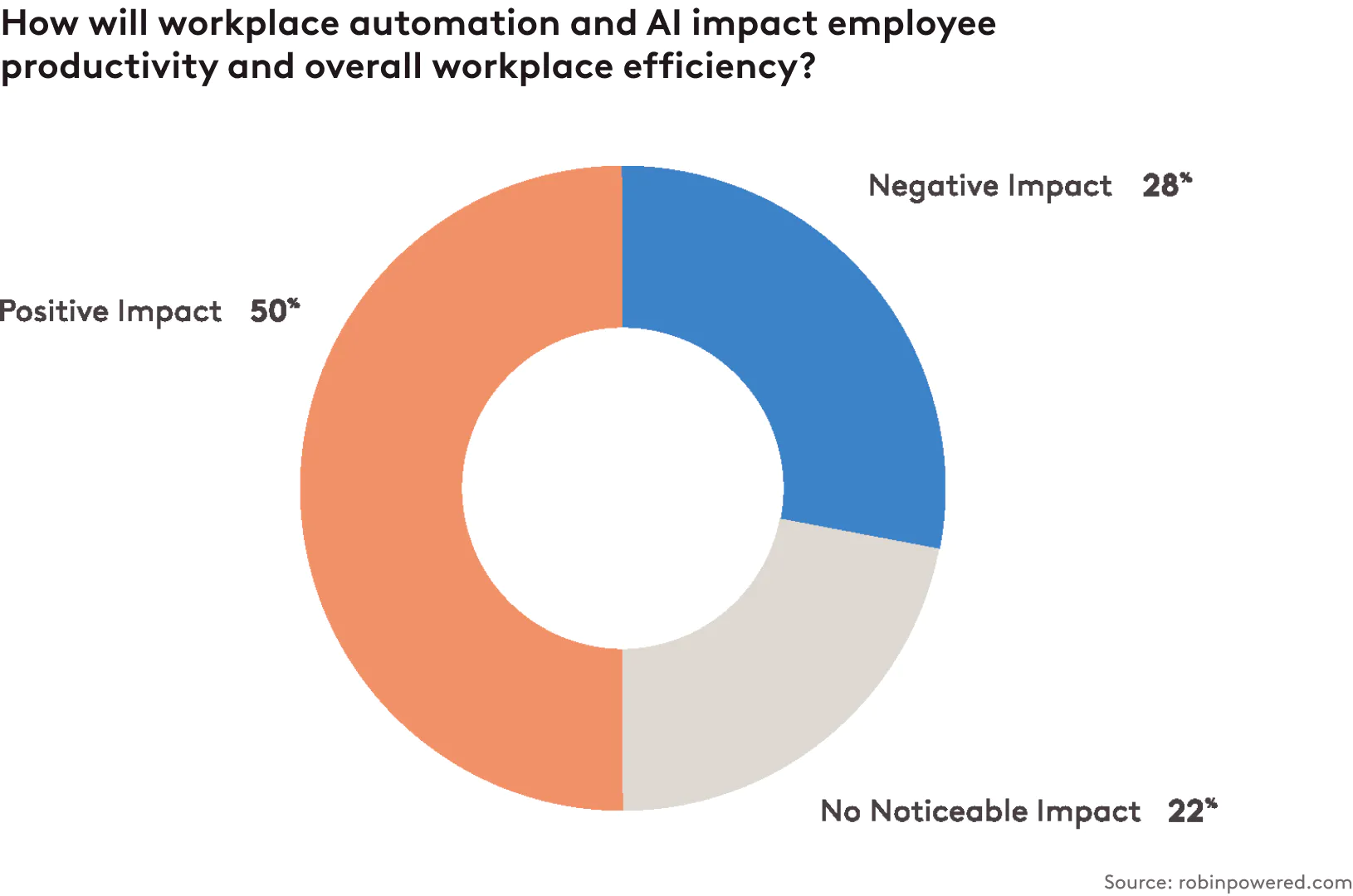There’s still plenty of uncertainty surrounding automation and the use of AI-driven tools. When it comes to the workplace, the benefits of leveraging automated processes complement the needs of a more flexible workforce.
With hybrid work becoming the standard practice for most offices, companies are responsible for finding new ways to optimize their spaces while reducing hurdles between employees and the office. Leveraging intelligent automation tools is one way to start building a more seamless workplace experience.
So what should offices consider as they think through applications of AI and intelligent automation in their workplaces?
1. Start Small
Implementing AI and automation in offices can feel like a gargantuan undertaking. But, as with anything new, it helps to start small. Consider which tasks in your office could benefit from automation technology. These are usually processes that are manual and repeatable.
Try starting with resource management in your offices.
- Can you find ways to streamline room bookings with automation?
- How can you better address conference room scheduling with automated processes?
Starting small will help you build the knowledge base you need for future advancements and planning.
2. Communicate your Intentions to Teams
All this talk of automation and AI can be alarming to employees. Job loss is at the front of everyone’s minds, especially considering the current economic climate. There is no better antidote to fear than communication.
Be clear and direct about how and where you see AI and automation playing a role in your workplace. Consider how to address concerns around job security and ensure to be consistent in your messaging. AI and automation can help make everyone’s lives a bit easier, so make that clear to your teams.
3. Plan for the Long-Term
Take time as an organization to consider how you want to leverage AI and automation in the future. This will look different for every organization but should involve a strategic conversation about what roles AI could play in moving the company forward.
As part of this exercise, assess the potential impacts of implementing more automation or AI across your workplace.
- Would your plans affect certain job roles?
- How would AI and automation be managed and by who?
- What are some of the risks of relying on automation?
Working through these kinds of questions will help you better understand what role this kind of technology could play in your future business plans.
4. Keep an Open Mind
AI and automation in the workplace, and beyond, are moving fast. But it’s important to remember that it’s still early. These technologies will continue to evolve and our understanding of how to leverage them most effectively will only get stronger.
While there are certainly justified concerns around AI and what it means for the way we work, there are also untapped opportunities and benefits that we haven’t even considered yet. Keep an open mind when it comes to the world of AI and automation - who knows where this technology might take us next.







![[Ungated] AI, Automation and the Future of Workplaces](https://assets-global.website-files.com/636bbf9c519296f08f480299/646cbf6760bc4ae7a0f9ed07_woman-booking-a-suggested-desk-in-the-office-mobile.webp)









![[Ungated] Return to Office Report 2024 Drivers, Detractors and Days in the Office](https://assets-global.website-files.com/636bbf9c519296f08f480299/65f081220d9e4b3e937e15f1_RTO%20Report_Featured%20image.webp)
![[Ungated] Office Space Report 2023](https://assets-global.website-files.com/636bbf9c519296f08f480299/6544144a589c5d337457486d_Office%20Space%20Report_Featured%20image.webp)
